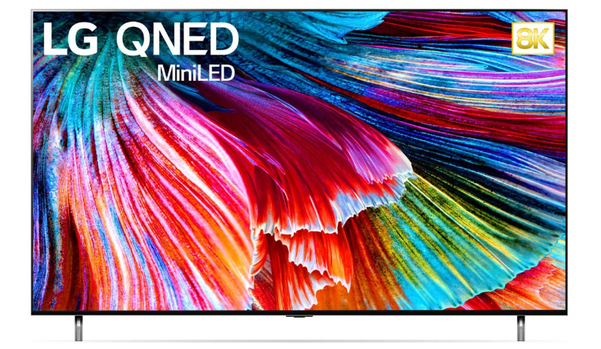Input 2021.02.24 06:00 | Revision 2021.02.24 08:22
LG “OLED is the best” passive in mini LED TV
Industry “LG QNED only needs to be ranked second for Samsung’s check”

According to LG Electronics on the 24th,’QNED’, a mini LED TV product line that will start selling in North America as early as April, will be released in 4K 75·86 inches (90 series) and 8K 75·86 inches (99 series) in the market. It is sold as a top-of-the-line model of’Nanocell TV’, a product line of LCD TVs, and is characterized by increasing brightness by using mini-LEDs that are smaller in size than existing LEDs in the backlight unit. High quality was achieved by adding quantum dot technology to the nanocell color film used in the existing nanocell TV.
QNED uses about 30,000 mini LEDs for 86-inch backlight. This is 10 to 15 times more than that of a typical LCD TV currently on sale with about 2000 LEDs for backlighting. As such, the screen brightness is brighter, so it has strengths in color expression. The number of local dimming blocks that play a very important role in rendering black on a TV screen is over 2500. It is five times more than a general LCD TV that uses 400 to 500 units.

LG Electronics is also somewhat passive in sales of QNED, a mini LED TV. The QNED brand was introduced before Samsung Electronics, but the actual sales plan was delayed by a month or two from Samsung Electronics. The product size is also limited to 75·86 inches at the beginning of the release, unlike Samsung Electronics, which set a wide range of 55 to 85 inches. It is a so-called’second-class strategy’ that only needs to secure a certain level of market share without having to increase sales.
Another part of the marketing strategy is the name of the mini LED TV product line as QNED. QNED has been recognized as taking the acronym of’Quantum Nanolard Emitting Diode’, which Samsung Display is developing.
However, LG Electronics explained that it was taken from the initials of’Quantum Nanocell Emitting Diode’, which contains the technical characteristics of its own mini LED TV. An industry insider said, “LG Electronics named the mini LED TV as QNED was to beat Samsung Electronics, which tried to use QNED as a next-generation display,” and said, “It seems to be a marketing strategy to check both the current and future flagships.” Said.

